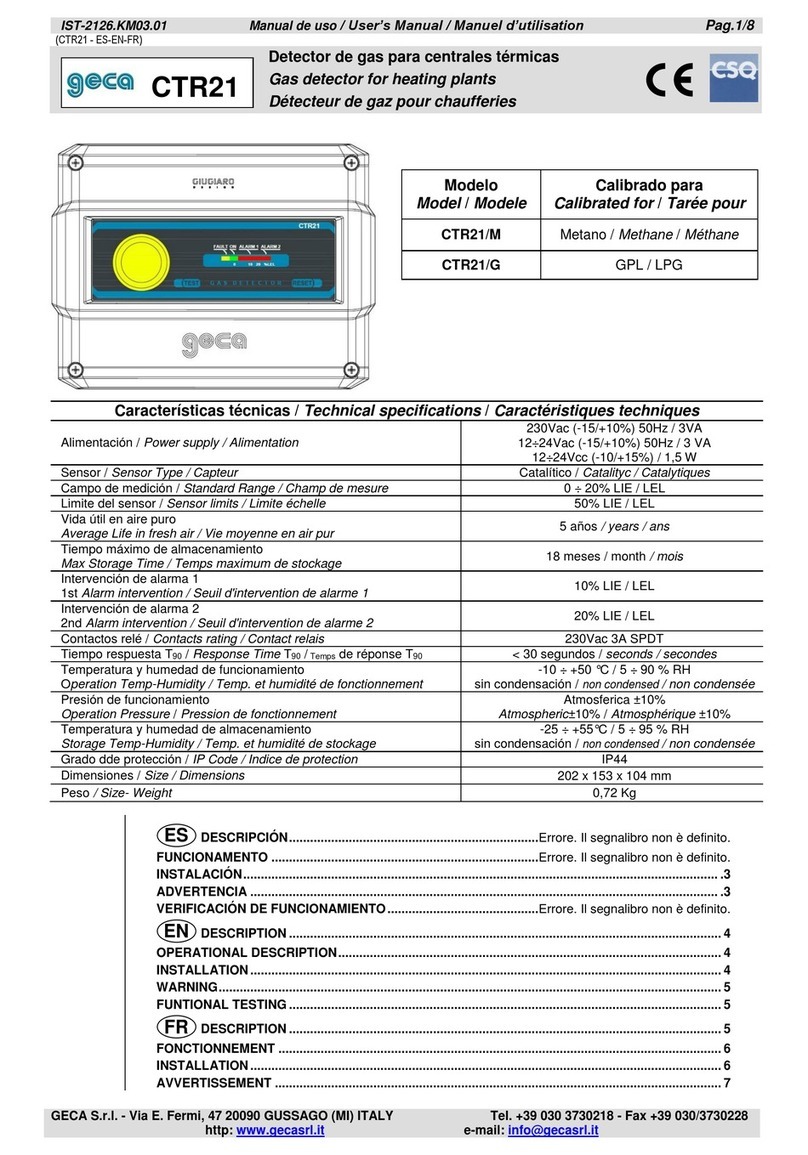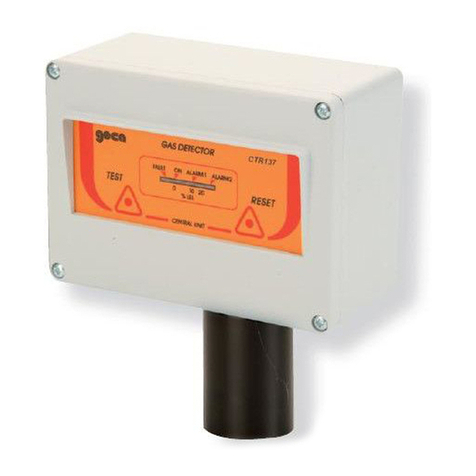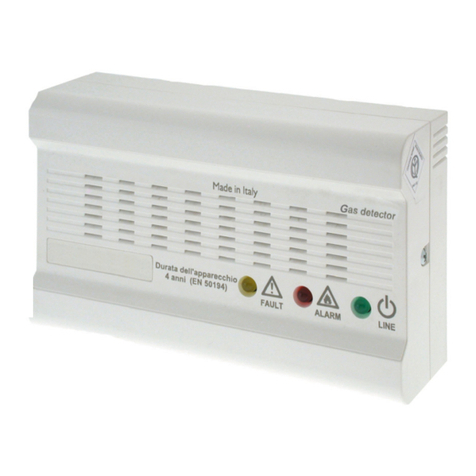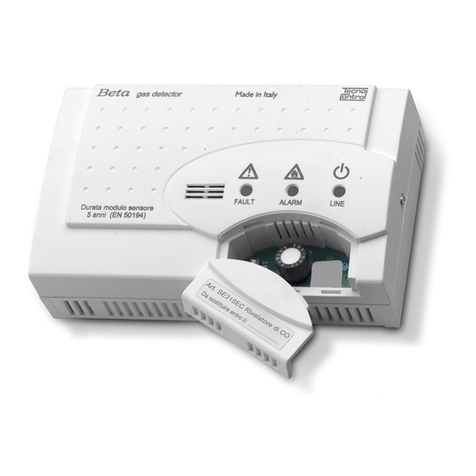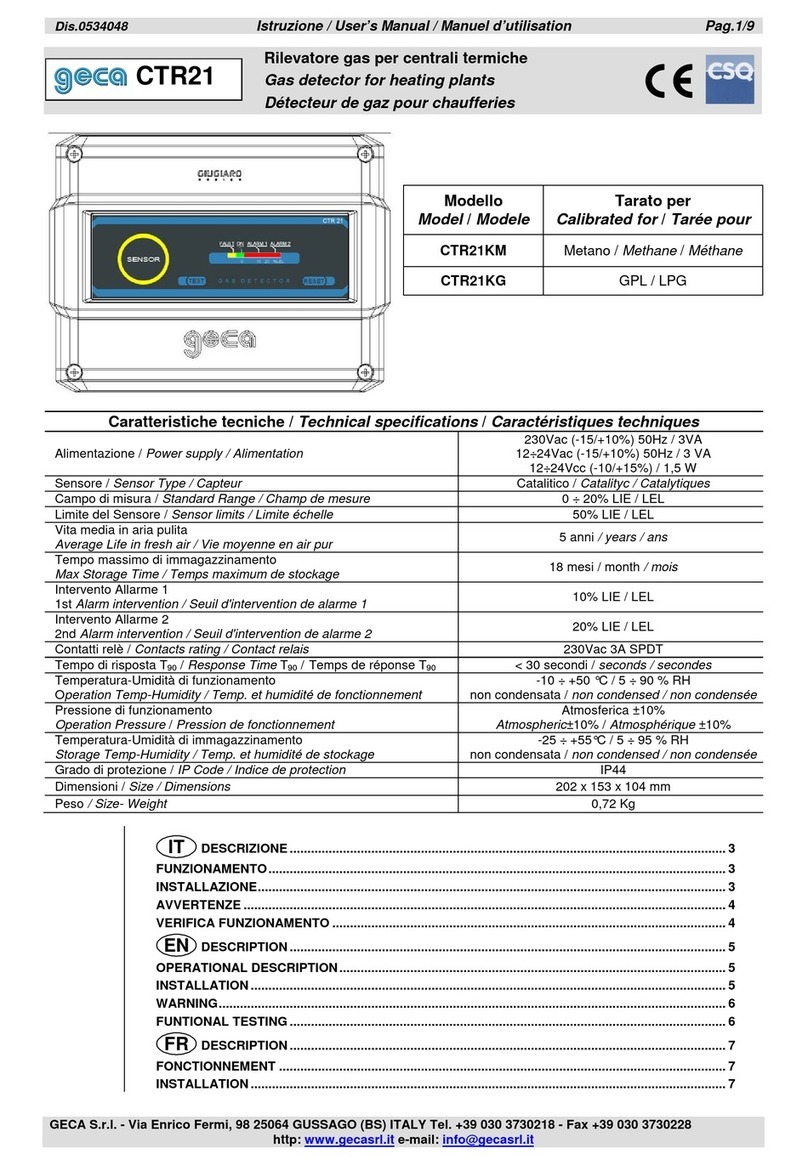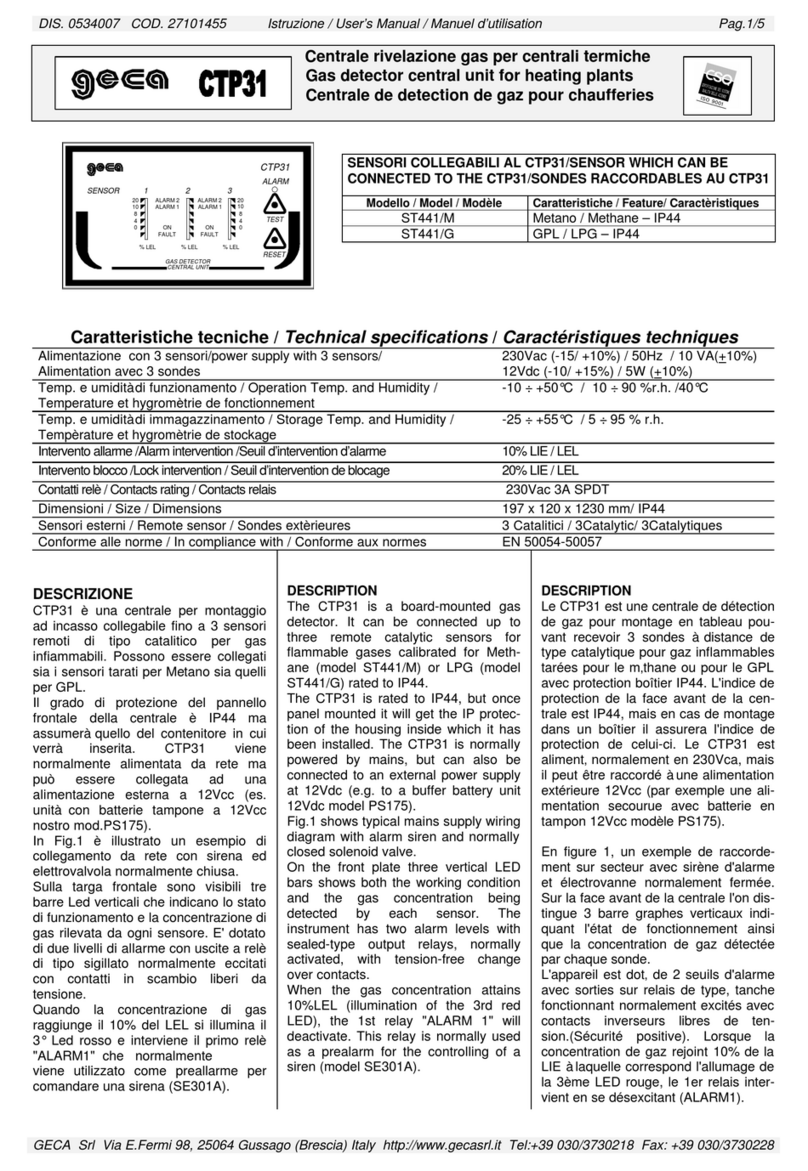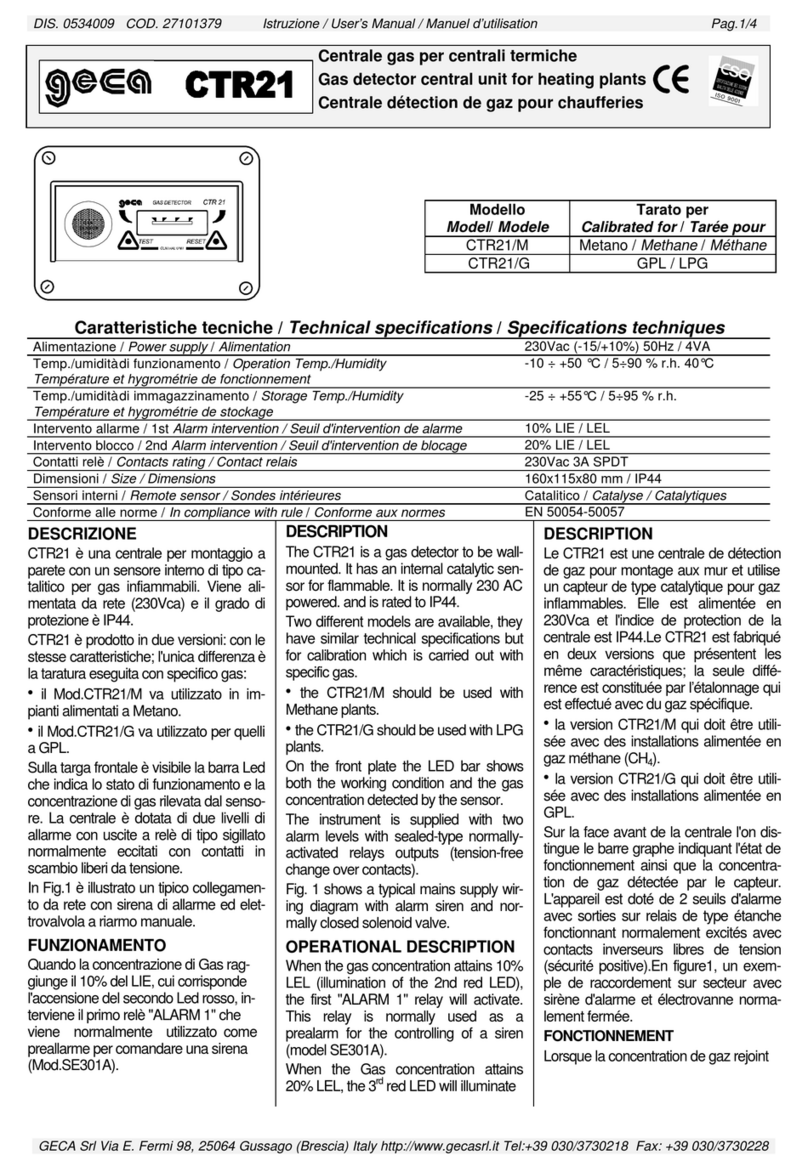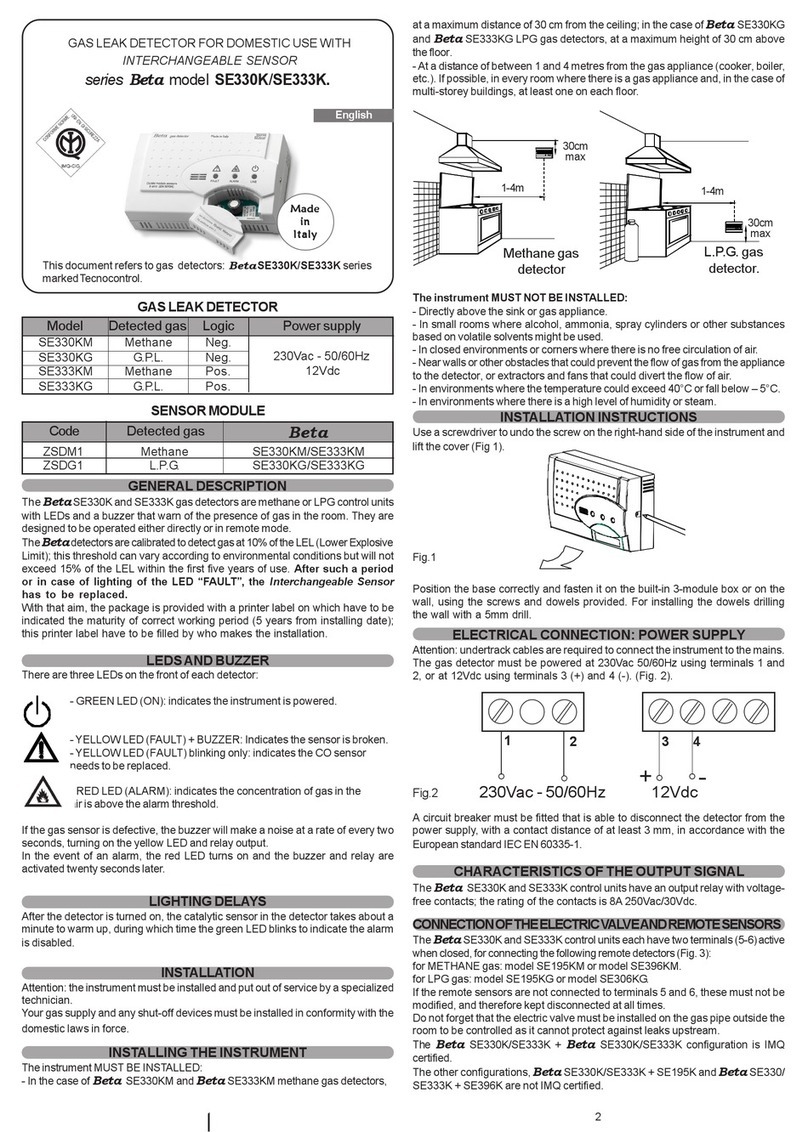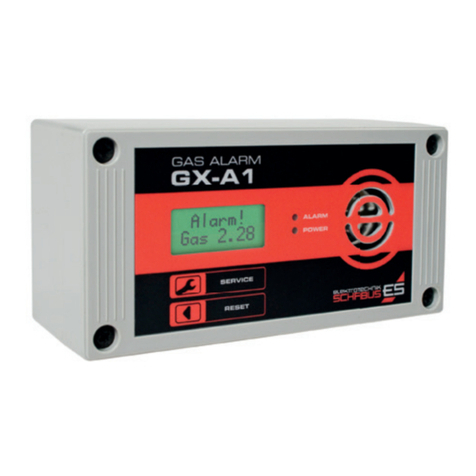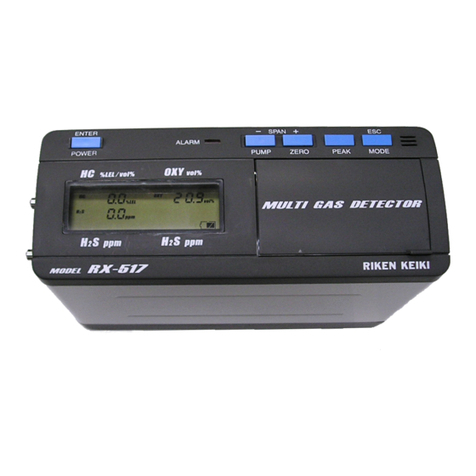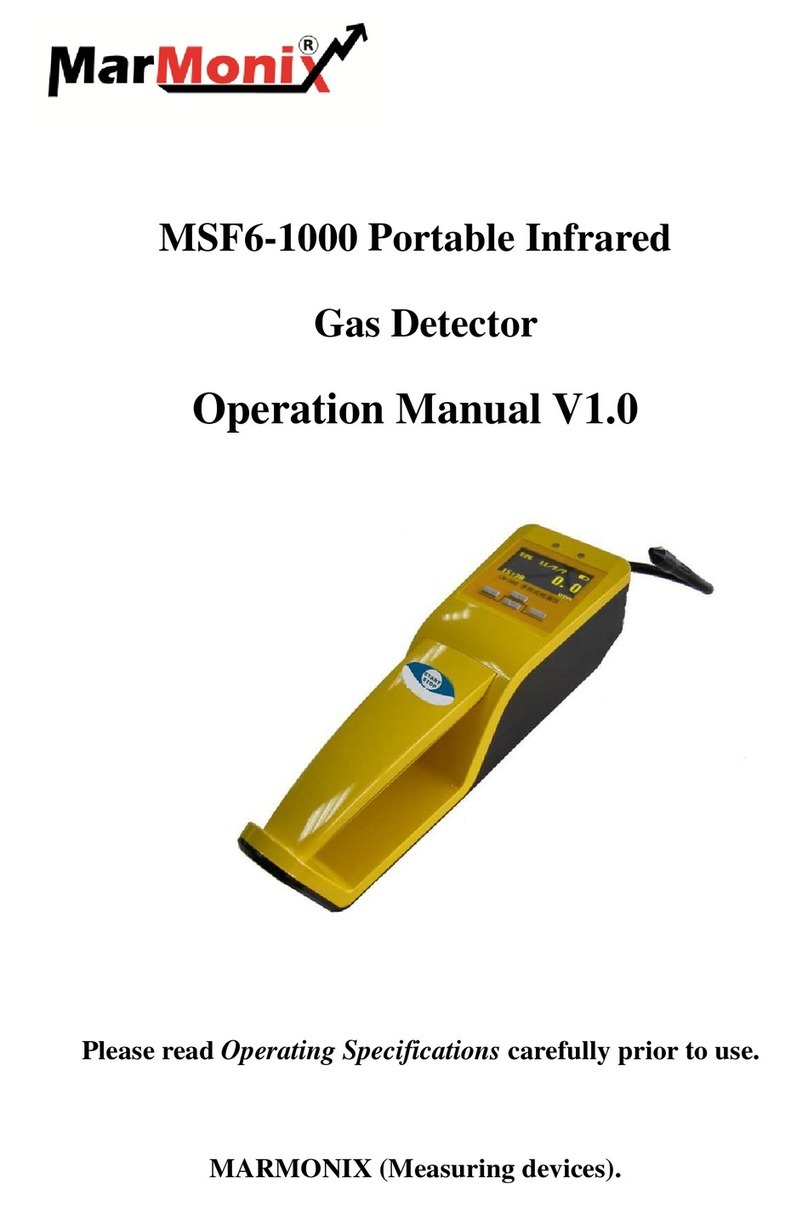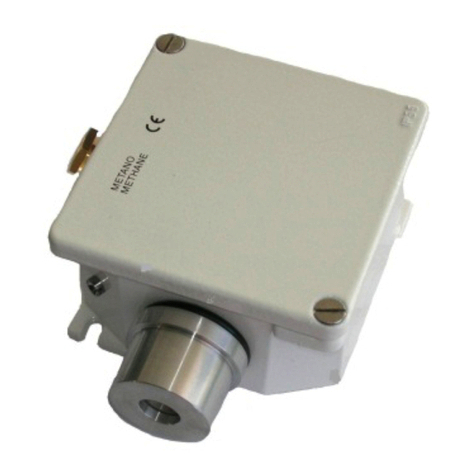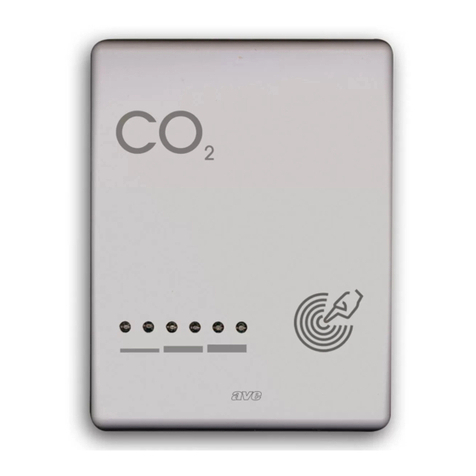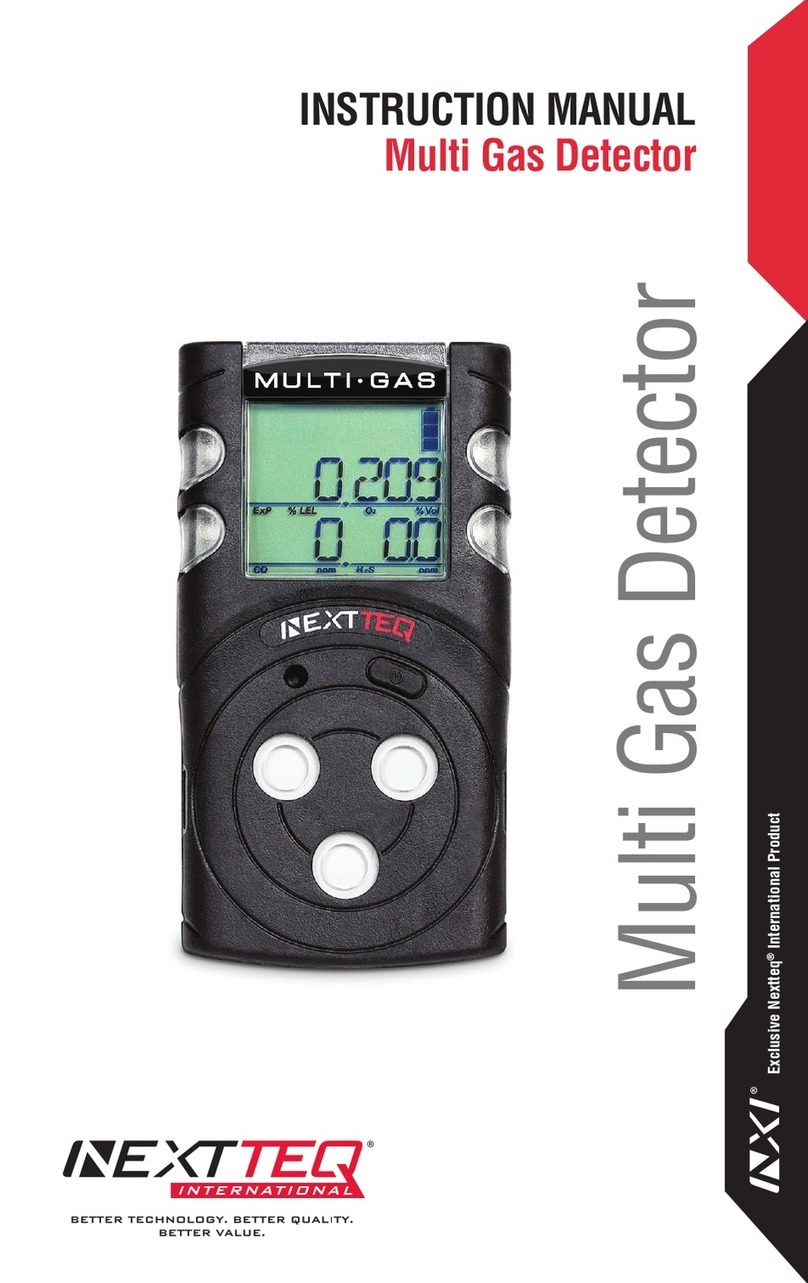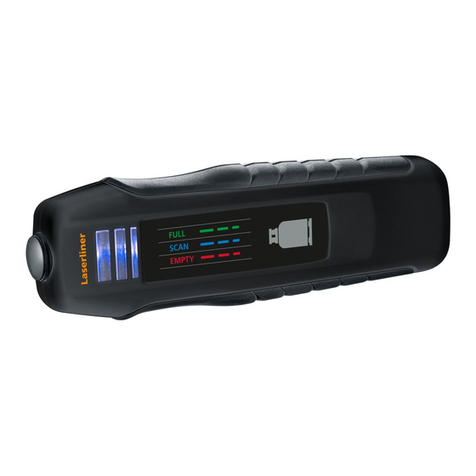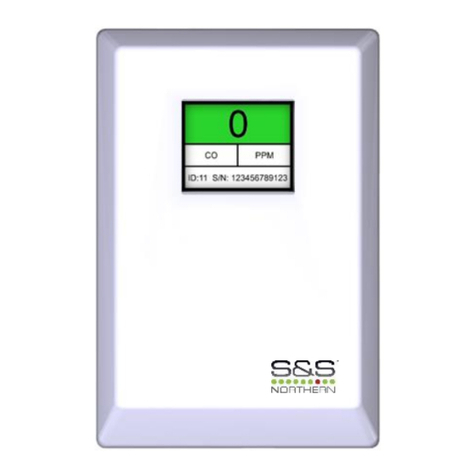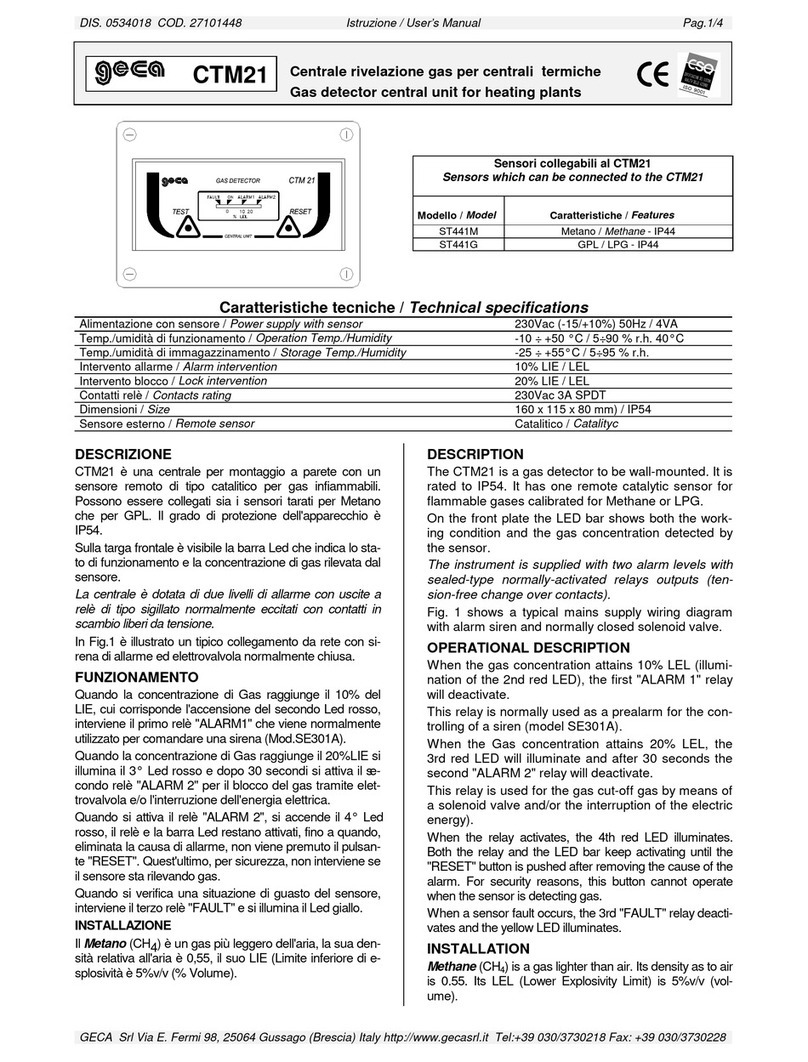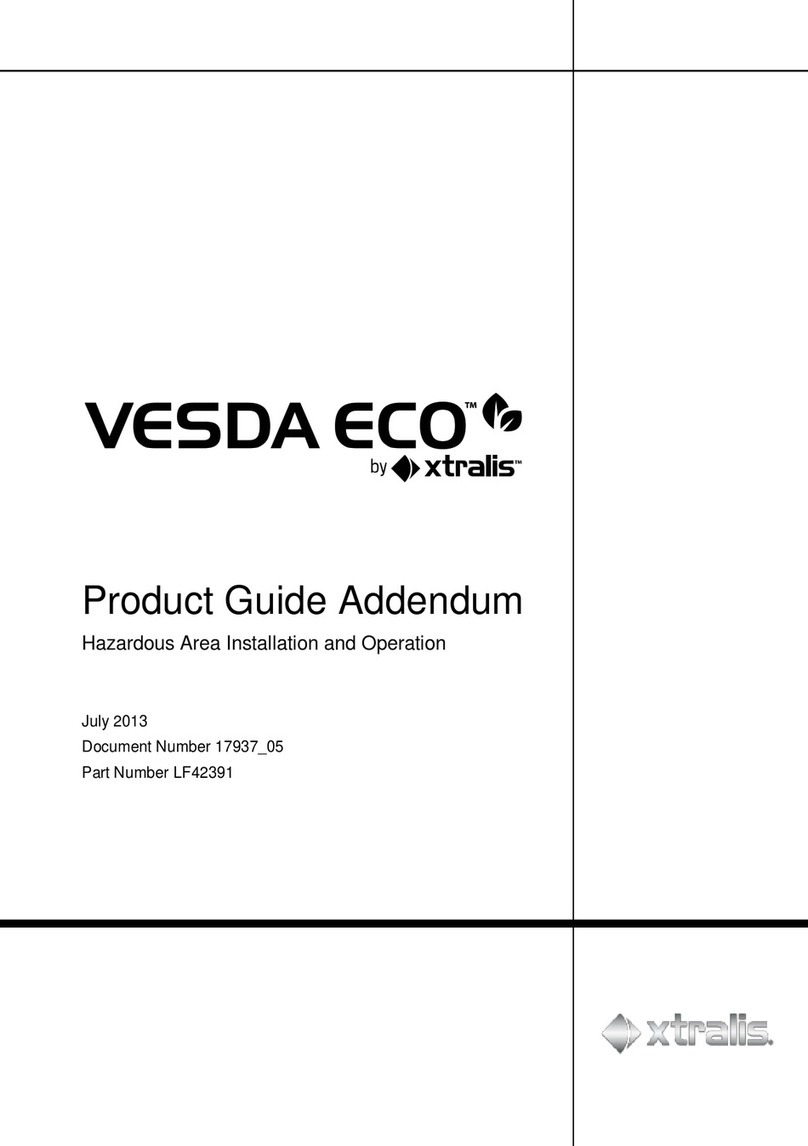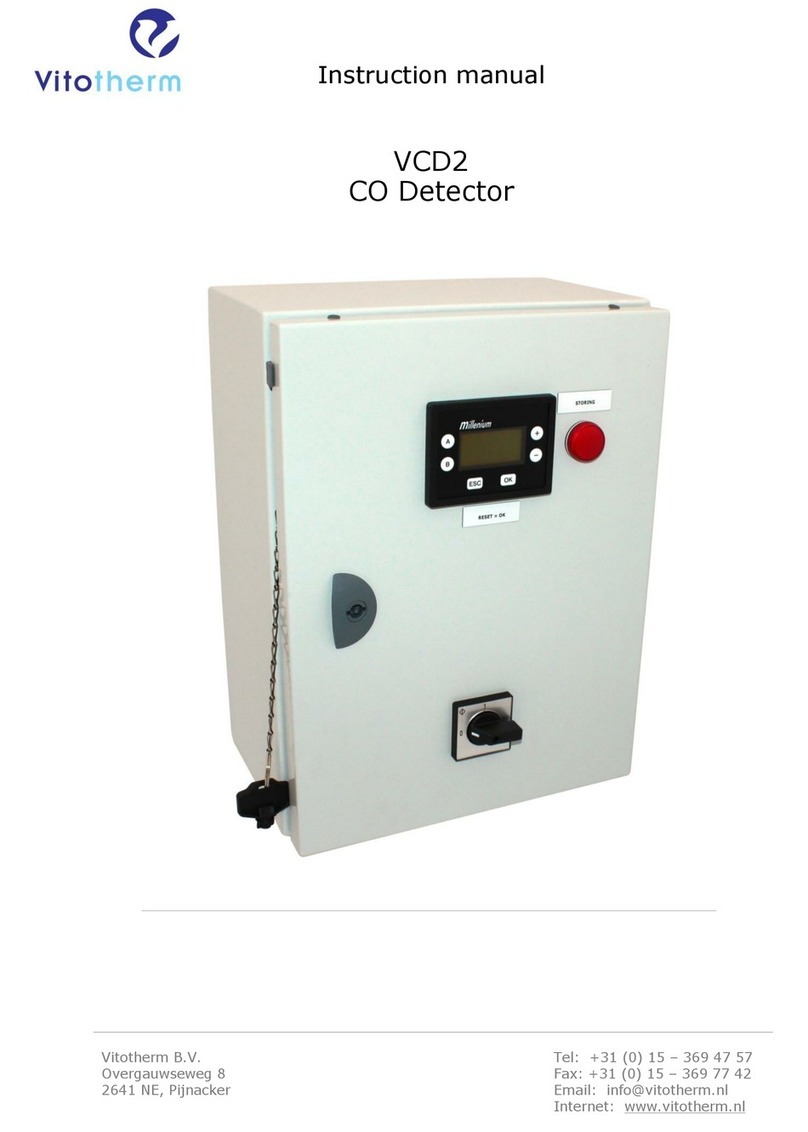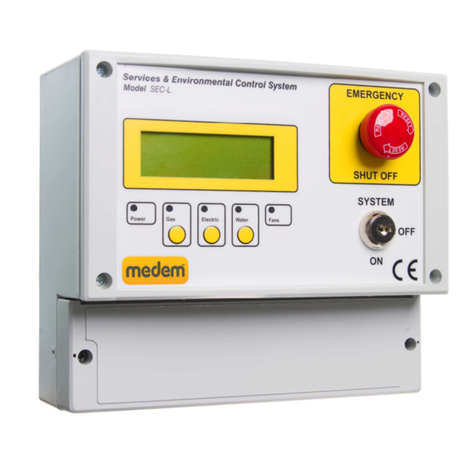
Carbon monoxide detector with
Interchangeable Sensor
series Beta model 752CO
Model Power supply Detected gas
752CO 230Vac-50Hz CO
GENERAL TERMS OF THE GUARANTEE
THIS CERTIFICATE IS THE ONLYDOCUMENT THAT ENTITLES
YOU TO REPAIR OF THE PRODUCT UNDER THE TERMS OF
THE GUARANTEE.
- The product is GUARANTEED for a period of 24 months from the date
of purchase.
- The GUARANTEE does not cover damage caused by tampering,
incorrect or improper use and installation.
- The GUARANTEE is valid only if it is duly compiled.
- In the event of defects covered by the GUARANTEE, the manufacturer
will repair or substitute the product free of charge.
SERVICINGAFTERTHE GUARANTEE PERIOD
Any repairs after the period of the GUARANTEE will be charged on the
basis of the parts substituted and the cost of labour.
Sensor Module
Detected gas
3.752.1634 Carbon monoxide 752CO
Code Beta
Toxic symptoms
When the concentration exceeds one of the alarm thresholds, there
is a slight delay and then the red LED on the front of the device
starts blinking and the internal buzzer is activated. At the same
time, the detector activates any device to which it is connected
(electric extractor, fan, buzzer, electric valve, etc.). The detector
automatically reverts to normal operating mode as soon as the
alarm turns off.
LEDSAND BUZZER
There are three LEDs on the front of the Beta 752/CO gas detector:
- GREEN LED (LINE): indicates the instrument is powered.
When the instrument is turned on, the LED blinks for
about 40 seconds to indicate the sensor is warming up;
the detector is not, therefore, ready for use until the LED stops
blinking.
- YELLOW LED (FAULT) + BUZZER: indicates the sensor
is broken.
- YELLOW LED (FAULT) blinking only: indicates the CO
sensor needs to be replaced.
50 ppm THRESHOLD 1
100ppm THRESHOLD 2
300ppm THRESHOLD 3
The relay and buzzer are activated after the time set for each threshold.
The Beta 752/CO gas detector has a built-in buzzer that warns people
of danger and malfunctioning of the device. The buzzer is sufficiently
loud to be heard in rooms adjacent to the one where the detector is
installed.
LIGHTING DELAYS
After turning on the Beta, it takes about 90 seconds for the CO sensor
in the detector to stabilize (this is the “stabilization time”). In the
meantime, the green LED blinks and the alarm control is disabled.
MALFUNCTIONING
You will need to replace the detector if all three LEDs are still blinking
5 minutes after you turned on the instrument. All three LEDs (RED,
YELLOW and GREEN) blink at the same time whenever the detector
malfunctions.
INSTALLATION
Attention: the instrument must be installed and put out of service
by a specialized technician.
Your gas supply and any shut-off devices must be installed in
conformity with the domestic laws in force.
The installation of this instrument does not replace the appropriate
installation, use and maintenance of gas appliances and suitable
ventilation and extractor systems.
- RED LED (ALARM): indicates the detector is in alarm
mode: it has detected a concentration of more than 50 ppm
(1st threshold) within a time-span of 70 minutes, or a
concentration of more than 100ppm (2nd threshold) within
a time span of 20 minutes, or a concentration of 300 ppm in
1 minute.
The red LED blinks at a different rate according to the threshold
concerned:
INTRODUCTION
This instrument is intended solely for the detection of carbon monoxide
(“CO”).
Carbon monoxide is a highly toxic, colourless and odourless gas and
combustion pollutant. The very toxic nature of CO is such that its
presence in air, even in low concentrations, can cause nausea and
cephalea, or loss of conscience in the case of prolonged exposure.
Prolonged exposure to higher concentrations can result in death, as
CO is able to bond with blood much easier than oxygen.
Below is a table illustrating the danger of CO according to level of
concentration and period of exposure:
Concentration of
CO in air
100ppm (0,01%) Slight headache in 2-3 hours
400ppm (0,04%) Slight headache in 1-2 hours, increased after
2-3 hours
1600ppm (0,16%) Headache, giddiness and nausea in 20
minutes, death within 2 hours
6400ppm (0,64%) 6400ppm (0.64%) Headache and giddiness in
1 or 2 minutes, death in 10-15 minutes
12800ppm (1,28%) 12800ppm (1.28%) Death in 1-3 minutes
As the data suggests, the CO detector needs to respond instantly
and even when the concentration of CO is minimal, in order to give
sufficient warning and, therefore, before the amount of CO absorbed
by the human organism reaches a dangerous level. The instrument
is calibrated at the factory to trigger an alarm when the detected
concentration of CO in the air is:
50ppm for 70 minutes
100 ppm for 20 minutes
300 ppm for 1 minute
GECA Srl guarantees these thresholds for a period of 5 years.
The Sensor module must be replaced after these 5 years, or when
the “FAULT” LED turns on.An adhesive label on the front of the detector
indicates the expiry date of the guarantee (5 years from the date of
production).
OPERATION
GENERAL
Beta 752/CO has an element that is sensitive to the concentration of
carbon monoxide in air.





